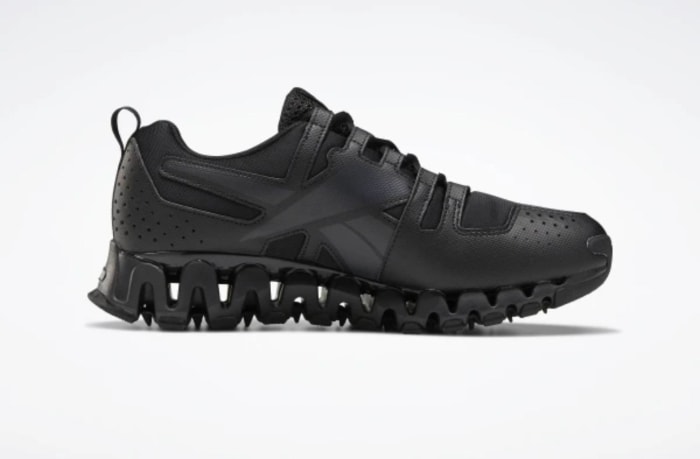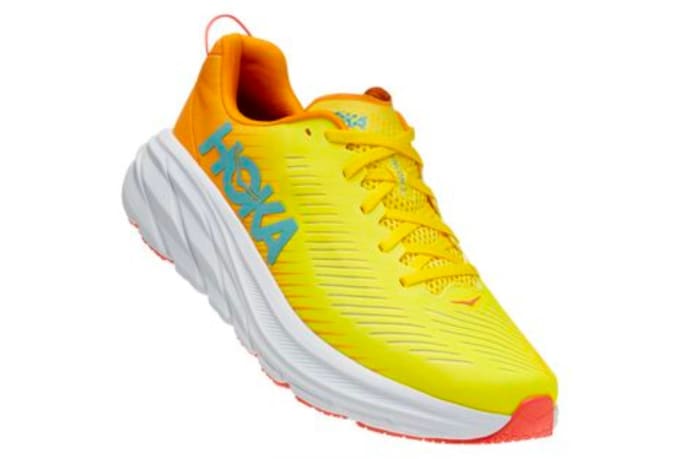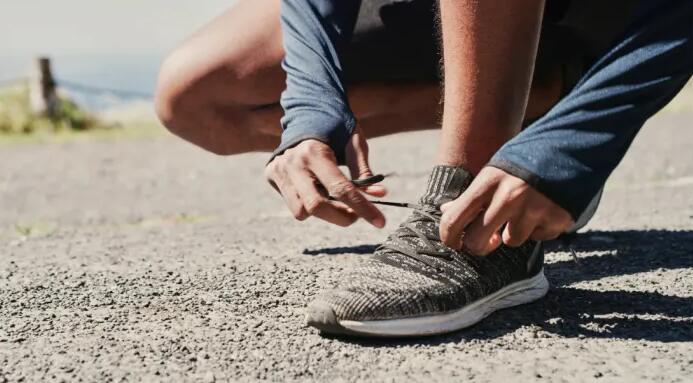The Best Running Shoes in 2022
Want to know what makes a great pair of running shoes? A thoughtful and rigorously tested design.
For example, consider two features everyone should look for: durability and support. From the upper and tongue to the toe box and outsole, you’ll want a pair that can take a pounding for miles while protecting your joints and muscles. A quality pair of shoes properly withstands and absorbs the impact of your feet hitting the pavement or trail. It does so by distributing that impact across its structure to minimize the blunt force your body takes. This distribution occurs through foams, cushions and various elements of design. And when done well, the distribution of force can even be used to propel you forward.
It’s also very important to consider the height of your arches, as that can drastically affect your gait, and which shoes will work best for you. People with low arches or flat feet often find that their feet roll inward as they run (this is called overpronation). They’ll benefit from stability shoes, which help provide additional support through the midsole and into the heel, Nike says, and can prevent injury. (If you’re not sure how high your arches are, or if there are any irregularities in your gait, a physical therapist can help you figure it out.)
Fitness pros often advise that it’s important to evaluate the quality of materials used in the shoe construction to determine how well they will perform.
“When I was working for Nike, Inc., it was my job to educate the general population about different types of running shoes. I always lead people in the direction of shoe technology,” says D’Annette Stephens, ISSA-CPT. “I encourage you to think about functionality (mileage and use), injury protection (ankle support, arch support, cushion) and of course your own personal style! All of these elements will hopefully lead you in the direction of better running performance.”
Our picks for the best running shoes you can find in 2022:
- Best Overall: Adidas Ultraboost 21
- Runner-Up: New Balance Fresh Foam 860v12
- Best Long-Distance Running Shoe: Reebok Zigwild Trail 6
- Best Trail Running Shoe: Skechers GOrun Razor Trail
- Best Running Shoe for Speed: Nike Air Zoom Pegasus 38
- Best Lightweight Running Shoes: Hoka One One Rincon 3
- Best Value Running Shoe: Reebok Floatride Energy 3.0 Running Shoe
- Best Running Shoe for Women: Saucony Ride 14
- Best Running Shoes for Men: Hoka Clifton 8

Adidas
Best Overall: Adidas Ultraboost 21
The Adidas Ultraboost 21 is a textbook example of meticulous design merging with high-quality materials and construction. Adidas outdid itself with a design that takes full advantage of weight, cushioning and responsiveness to deliver optimal foot support and performance. The shoe has incredible forefoot bending stiffness, which is the technical way to say it supports you from its midsole. The shoe has a sock-like fit with a comfortable textile lining and a toe box that stretches to accommodate the shape of your foot. The outsole is high-quality Continental rubber for premium traction.
Adidas Ultraboost 21 Running Shoes ($180, adidas.com)

New Balance
Runner-Up: New Balance Fresh Foam 860v12
The New Balance Fresh Foam 860v12 Running Shoe is our runner-up for its durability, support and stability. In fact, it’s billed as a stability running shoe. New Balance designed the shoe to be highly responsive while still propelling your stride—meaning it shouldn’t feel overly stiff or restrictive. It’s also made to allow for just the right amount of give while maintaining structure and support in all the right places (even though it widens up considerably from the heel to the midsole).
New Balance Fresh Foam 860v12 Stability Shoes ($134.99, amazon.com)

Reebok
Best Long-Distance Running Shoe: Reebok Zigwild Trail 6
Long-distance running is all about stamina and energy preservation. The Reebok Zigwild Trail 6 is designed to help with that by dispersing energy across your underfoot at just the right time in your stride. And while it’s technically a trail shoe, it’s ok to run on pavement or on a treadmill with it, too— the zig-zag outsole absorbs and disperses energy from whatever running surface you’re on. From the second your heel touches down to the second your toes lift off, the outsole is designed to keep you supported while ensuring there is no undue pressure on any one part of your foot.
Reebok Zigwild Trail 6 Long-Distance Running Shoes ($110, reebok.com)

Skechers
Best Trail Running Shoe: Skechers GOrun Razor Trail
Trail runners need an outsole with traction. That grip is incredibly important on rocky and rooty terrain, especially when a trail takes a steep incline or decline. Skechers pulled out all the stops with the outsole on its GOrun Razor Trail shoe. The tread is unique— it was designed and constructed by Goodyear with multi-directional traction to create a better grip on uneven surfaces. The quality of the Goodyear outsole and its wider footprint also add to the shoe’s durability and stability. And aside from the tread, Skechers made another smart design choice in the GOrun’s highly responsive midsole foam. It contains a material made from compressed cells that cushions your stride, which should make the shoe feel lightweight, despite the heaviness of the tread.
Sketchers GOrun Razor Trail Shoes ($130, amazon.com)

Nike
Best Running Shoe for Speed: Nike Air Zoom Pegasus 38
No list of “best running shoes” would be complete without Nike. And when it comes to speed, the Nike Air Zoom Pegasus 38 runs laps around other contenders in this category—including other Nike models. Its rubber outsole maintains grip exceptionally well, keeping your foot firmly planted where it lands until toe-off. Some customers have noted that prior models of the Pegasus sacrificed a bit of stability for speed, but the Pegasus 38 comes with a redesigned outsole and wider toebox in an effort to increase both. A breathable mesh upper conforms to the shape of your foot. And additional foam layers have been strategically added to create a smoother stride, greater responsiveness and a more cushioned shoe.
Nike Air Zoom Pegasus 38 Running Shoes ($130, amazon.com)

Hoka
Best Lightweight Running Shoes: Hoka One One Rincon 3
Sporting a lightweight design (7.7 ounces for men’s and 6.5 ounces for women’s), the Hoka One One Rincon 3 is one slender running shoe. It has a rounded outsole designed to encourage good form, provide stability and help you speed up quickly while maintaining a smooth stride. You may notice a bit less cushion in this model if you’ve ever tried on a pair of Hoka Rincons. Still, the Rincon 3 is designed to evenly distribute your weight thanks to its thick outsole, which softens a lot of the impact on your feet. If you want ultra-lightweight shoes designed for speed and performance, you found them.
Hoka One One Rincon 3 Running Shoes ($120, amazon.com)

Reebok
Best Value Running Shoe: Reebok Floatride Energy 3.0 Running Shoe
The Reebok Floatride Energy 3.0 running shoe earns the title “best value” thanks to its overall versatility and incorporation of some of the same features found in more expensive models. At 8.5 ounces, it’s respectably lightweight considering its price point, with a 9 millimeter midsole drop, a carbon rubber outsole for stability and a specialized bouncy foam designed to deliver comfort without adding density. Adding to the shoe’s comfort is its breathable square knit upper and a flared heel collar that supports the heel and Achilles tendon. It’s designed to perform well on the trail, treadmill and pavement, making it one of the most well-rounded shoes in terms of terrain performance on this list.
Reebok Floatride Energy 3.0 Running Shoes ($110, reebok.com)

Saucony
Best Running Shoe for Women: Saucony Ride 14
The Saucony Ride 14 won our top pick for best women’s running shoe because it’s the result of Saucony’s continuous wear testing and customer feedback. And as customer reviews on Saucony’s site attest, this model is a marked improvement in every way possible. The upper mesh is completely redesigned and much more breathable, reviewers say. And the shoe’s PWRRUN (Saucony’s special blend foam) has been thoughtfully reconfigured to provide support and soft cushioning in the right places without losing any of the responsiveness the Saucony Ride is known for. Its profile securely hugs your foot for faster runs and its lining—while thinner and lighter—is arguably a more comfortable fit than previous versions.
Saucony Ride 14 Women’s Running Shoes ($130, amazon.com)

Hoka
Best Running Shoes for Men: Hoka Clifton 8
The Hoka Clifton 8 Running Shoe is our top recommendation for men. This model features an extended running shoe “crash-pad”—essentially shock absorbers designed to cushion your heel when it strikes the running surface. The crash-pad helps transition your weight across the lightweight midsole all the way to toe-off. As your stride propels forward and your heel lifts up, the Clifton 8’s plush mesh tongue protects the top of your foot. The shoe also streamlines the curves found in comparable running shoes to create a roomier fit.
Hoka Clifton 8 Men’s Running Shoes ($140, amazon.com)
Why Buy Running Shoes?
Selecting the right running shoe is a must for anyone who walks and jogs for cardio workouts or trains for competitive races or long-distance runs. Unlike fashion sneakers and some “athleisure” footwear, running shoes have cushioned midsoles and insoles that provide support for your heels, arches and ankles. Many brands also claim that the right running shoes can also improve your athletic performance. In fact, in 2017, Nike commissioned a study to test if their then new Nike Vaporfly helped runners go faster. The study was able to conclude that the shoes improved a number of factors, notably speed by about 1%.
Today, popular shoe brands continue to debut new running shoe models designed to deliver a more comfortable experience and higher performance no matter what terrain you’re running on. Let’s unpack a few of the different types of running shoes the top brands are offering today.
Types of Running Shoes
Road running
If you plan to run on sidewalks, tracks, streets or similar artificial terrain, you’ll want road running shoes. They’re designed with plenty of cushion and shock absorbency compared to other models. Many road running shoes now also incorporate carbon plates in their midsoles to collect energy and propel runners.
Trail running
Compared to road running shoes, trail running shoes have bigger outsoles and a softer tread, making them better suited for hiking or running on nature trails. They have rigid midsoles and their uppers are often designed to protect your feet from things like rocks and stumps.
Racing shoes
Racing shoes (also known as “flats” or “racers”) are all about speed on race day. SThey’re designed to be lighter and faster than typical training shoes, which means they’re usually constructed from lightweight, less durable materials and contain foams that give your stride an extra bounce.
Running spikes
Running spikes are lightweight and minimalist in design, and feature spikes made of either metal or ceramic for better traction on track surfaces. They’re also often used for races on grassy terrain because of the grip they can provide.
What to look for in the best running shoes
No two runners are alike, so there is no running shoe capable of optimizing performance and support for everyone. You can narrow your options by first considering the type of running you plan to do. For example, road runners need a shoe with plenty of cushion while trail runners need outsoles with good tread.
Once you consider other things like budget, you’ll narrow the field even more. Correct shoe size is important as well. You want to make sure you get a size that’s snug to keep your heel in place, but not restrictive to the point that it limits mobility.
From there, it’s time for more personal considerations. For example, are you prone to sweaty and smelly feet, even from short runs? Consider shoes that offer a lot of breathability, which you get from styles that have mesh uppers. Breathability also reduces the skin friction that results in blisters. Some uppers are also water-resistant.
Additionally, some shoes will be better options for you depending on the shape of your foot, and specifically the height of your arch. This is because your arch impacts your gait, which is how your foot strikes the running surface. And different types of gait dictate where your feet need the most support. Overall, if you have a flat-to-low arch, you should look for a shoe that offers a lot of stability. Runners with flatter arches tend to have overpronation in their stride, meaning their foot rolls inward. Meanwhile, people with high arches need a lot of cushion, especially in their midfoot, so they should look for a neutral shoe. As a rule of thumb for runners in need of cushion, shoes with a taller stack height tend to have more cushion (stack height is the measure of shoe between the ground and your foot).
If you’re having trouble finding the right one for you, consider consulting a podiatrist or other sports medicine professional for more personalized recommendations.
